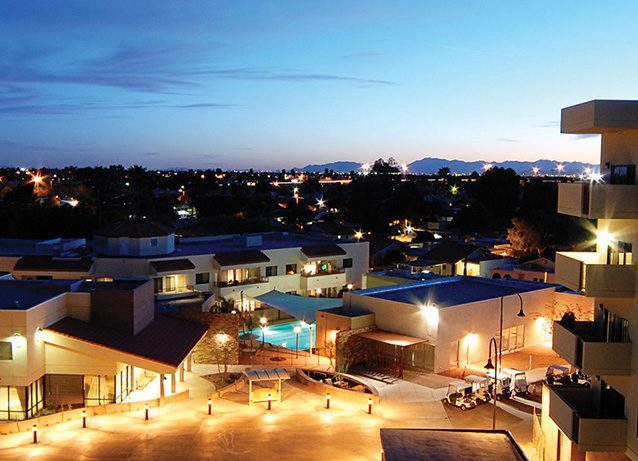
Many active older adults are considering a 55+ and Life Plan Communities for their active lifestyles that caters to people in their age group. To help you find the right choice for you and your goals, here’s a brief overview of what each type of community is, how they’re similar and any important differences you should consider.
What is a 55+ Community?
These are communities designed for adults ages 55 and better who are looking for a low-maintenance or maintenance-free lifestyle, making them a great option for active adults looking for carefree independent living. At a 55+ community, you typically buy your residence (and are responsible for selling it later too). Like any other real estate transaction, the price you pay for your home depends on the size of the residence and its desirability.
What is a Life Plan Community?
At first glance, a Life Plan Community looks and feels a lot like a 55+ community. They both can offer the same or similar amenities. However, Life Plan Communities offer added health care services on-site that allow you to age in place. Typically, instead of paying additional real estate taxes required when you live in 55+ communities, residents of Life Plan Communities basically prepay for future health care needs (which may come with tax benefits). Like any important financial decision, we recommend you consult with your tax advisor on your specific situation.
Similarities Between a 55+ and Life Plan Community
Because both community types cater to a similar group of people, it’s no surprise that there’s a lot of overlap in their lifestyles.
- Active social life: Your neighbors will be around the same age and often have similar interests and backgrounds, making it easier to form new friendships.
- Lots of amenities: Communities typically offer amenities like pickleball, a swimming pool, walking trails, fitness center, art and fitness classes, housekeeping, on-site dining options and some or all the maintenance will be covered.
- Dining: Both will offer a variety of dining venues featuring everything from chef-prepared restaurant-style meals to grab and go options. The difference is whether or not the meals are included in your monthly fees.
- Financial options: Regardless of which type of community you choose, the cost of your residence will be comparable to the value of homes in the area. Again, the larger your residence, the more you’ll pay. Each type of community also typically charges a monthly fee.
Differences Between a 55+ and Life Plan Community
- Additional costs: Unlike at a Life Place Community, at 55+ community you’ll be responsible for real estate taxes, homeowners’ insurance, HOA (or similar) fees to cover the cost of outdoor maintenance and services and amenities. Also, some utilities may not be included.
- Household chores: At a 55+ community, you could be responsible for your home’s indoor maintenance, upkeep and housekeeping.
- On-site health services: Life Plan Communities offer an on-site continuum of care that could include assisted living, memory care, skilled nursing and rehabilitation. So, you won’t need to change communities if you need higher levels of care.
- Tax breaks: At a Life Plan Community, a portion of your entrance and monthly fee could be tax-deductible as a future health care expense. Consult with your tax advisor to be sure.
The Lifestyle You Want with a Smart Plan for the Future
Ready to explore the active lifestyle at Friendship Village Tempe? Come to one of our events or schedule a visit to see the community, try out our microbrewery, and explore your apartment options by using our Community Assistant chat feature or contacting us here.






